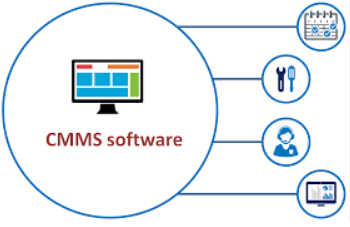In today’s rapidly evolving technology environment, companies strive to optimize their operations to remain competitive. One important aspect is the effective maintenance of equipment and assets. Computerized Maintenance Management Systems (CMMS) have changed the way organizations manage their maintenance activities. This article discusses the main benefits and features of CMMS to improve operational efficiency.
CMMS stands for Computerized Maintenance Management System. CMMS programs are beneficial in facilitating the planning, scheduling, and management of maintenance activities. These activities are pertinent to each asset, equipment, and building respectively.
An efficiently working CMMS maintenance software has a plethora of benefits! It can cut down on downtime, enhance asset health, increase productivity, and decrease manual efforts for simplified facility maintenance. Fiix is one of the best CMMS software that is the sclera.com widely used in the US. The CMMS asset management solution is designed for hassle-free asset maintenance and management. Fiix supports 10 languages and has supported 3,000 companies with work order management, equipment management, and asset upkeep.
It also offers inventory control, easy integration capabilities along with detailed analytics and reporting abilities. It incorporates a friendly intuitive interface for desktop and mobile apps. Thereby, assisting technicians in better managing and prioritizing schedules – even when they are offline!
Fix CMMS solutions are crucial for industries meaning to track and optimize maintenance and management.
Understanding a CMMS:
A fully computerized maintenance management system is a software solution designed to streamline and automate maintenance management operations. It serves as a central hub for organizing, planning and monitoring maintenance activities to ensure maximum asset performance.
Asset Management:
CMMS seamlessly tracks and manages assets throughout their lifecycle. This includes record information such as maintenance, repair costs and replacement schedules. Organizations can make informed decisions about repair, upgrade or replacement when they have a comprehensive view of assets that minimizes downtime and extends equipment life.
Preventive Maintenance:
One of the distinguishing features of a CMMS is its ability to implement preventive maintenance strategies. Instead of waiting for equipment to fail, organizations can schedule routine maintenance based on usage, time or condition. This proactive approach not only reduces unexpected failures, but also improves overall resource reliability.
Work Order Management:
Effective Work Order management is critical to a smoother maintenance process. CMMS enables organizations to seamlessly create, define and track work orders. This ensures that maintenance tasks are assigned to the correct personnel, completed in a timely manner and documented for future reference.
Inventory Management:
CMMS helps organizations keep spare parts and inventory under tight control. By tracking inventory levels, automating reordering processes and tracking usage patterns, companies can avoid unnecessary delays due to shortages and reduce costs associated with excess inventory.
Decision making from data:
CMMS provides valuable information through data analysis. By analyzing maintenance trends, organizations can make informed decisions to optimize resource allocation, anticipate potential problems, and continuously improve maintenance strategies. This shift to preventive maintenance minimizes downtime and maximizes operational efficiency.
Mobile access:
In the era of mobility, CMMS offers usability for different devices. Maintenance teams can access data, update work orders and conduct inspections via smartphones or tablets, promoting real-time collaboration and accountability.
Regulatory Compliance:
Industries with strict regulatory requirements can benefit from a CMMS to ensure compliance. The system helps organizations adhere to security standards, track audits and maintain detailed records, reducing the risk of fines for non-compliance.
Cost savings:
CMMS implementation often results in significant cost savings. By reducing preventive maintenance, optimizing inventory levels and improving overall operational efficiency, organizations can positively impact their bottom line.
Integration Features:
CMMS can be seamlessly integrated with other business systems such as Enterprise Resource Planning (ERP) and Customer Relationship Management (CRM) software. This integration provides a holistic view of business processes and improves overall organizational synergy.
Conclusion:
Businesses face the challenges of an ever-changing environment, making the use of technology imperative. Implementing a computerized maintenance management system empowers organizations to proactively manage their assets, reduce downtime and make informed decisions. By implementing a CMMS, companies not only make their operations more efficient, but also position themselves for continued success in an increasingly competitive environment.



